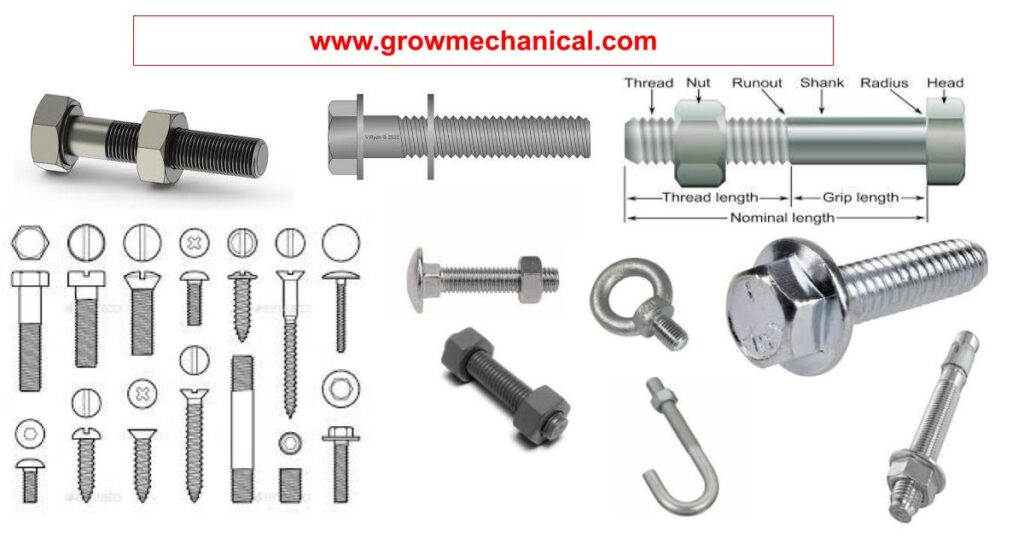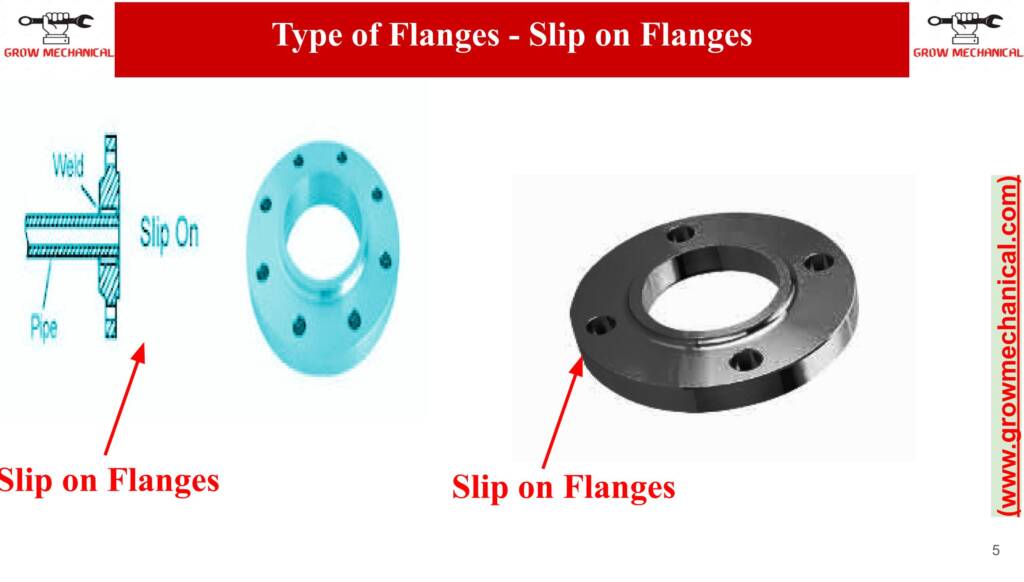What are pipeline flanges?
Pipeline flanges are an essential part of any piping system, providing a secure and reliable seal to ensure the safe transfer of high-pressure liquids or gases. Whether you’re installing a new system or maintaining an existing one, it’s important to understand how to choose the right pipeline flange for your application.
Pipe flanges are used to connect individual components in a piping system such as pipes, valves and pumps. The connection is made by bolting two flanges together with gaskets between them for sealing purposes. There are several types of flanges available, such as weld neck flange, slip on flange, blind flange, socket weld flange, threaded flange and lap joint flange (RTJ Flange). ANSI B16.5 / ASME B16.5 is the most commonly used specification in carbon steel and stainless steel pipe flanges. This type of connection provides easy access for disassembly and maintenance when needed.
Connecting pipelines together typically requires a pipe flange, which is made up of three components: a pipe flange, a gasket, and bolting. Commonly used pipe flanges are usually made from stainless steel. However, other materials may be available depending on the needs of the project. It’s essential to match the correct material for all three components for it to form a strong and safe connection.
What are pipeline flanges used for?
Pipeline flanges are used to seal pipe sections, create a secure connection between two or more components in the system, and transfer pressure safely throughout the pipeline. The type of flange needed for use in any application depends on the length and diameter of the pipe, as well as the material being transported through it. Different types of piping systems may require specific designs or materials to ensure an effective seal.
Types of Pipe flange
Pipe flanges are used to connect pipes, valves, pumps, and other equipment to form a pipeline system. There are several types of flanges available, each with their own unique features and applications. Here are some common types of pipe flanges with details:
- Weld Neck Flanges: These flanges have a long tapered neck that is welded to the pipe, providing good strength and stress distribution. They are commonly used in high-pressure and high-temperature applications.
-
Slip on flanges
Slip on flanges are popular for slightly larger pipes and involve slipping the fitting over a protruding end of the pipe and welding both sides of it so that it stays secure. This type of flange offers excellent resistance against leakage and can even be used in pressurized systems since they’re designed with a “tapered seat.”
Slip-On Flanges: These flanges are slipped over the pipe and welded in place, providing easy alignment and cost-effective installation. They are commonly used in low-pressure applications.
-
Socket weld flange
These flanges have a socket that is welded to the pipe, providing good strength and alignment. They are commonly used in small diameter high-pressure piping systems.
- Blind Flanges: These flanges are solid plates that are used to block off the end of a piping system, providing easy access for inspection and maintenance.
- Threaded Flanges: These flanges have threads on the inner bore that are screwed onto the pipe, providing easy installation and removal. They are commonly used in low-pressure and non-critical applications.
- Lap Joint Flanges: These flanges are used with stub ends, allowing the flange to rotate freely around the stub end. They are commonly used in systems requiring frequent dismantling for inspection and maintenance.
- Orifice Flanges: These flanges have a smaller opening or orifice that is used for measuring flow rate, typically with an orifice plate installed between the flanges.
- Expander Flanges: These flanges are used to connect pipes of different sizes, typically expanding or reducing the pipe diameter.
Weld neck flanges
When greater levels of rigidity and strength are needed from your connection points, then it might be best to use weld neck flanges which provide much higher sealing capabilities than slip ons (due to their longer contact surface area). This type also has an extended hub size which allows for higher internal stress loads without damaging the joint’s integrity making them well suited for high temperature applications like power plant piping systems containing acids, water, steam/oil etc.
Threaded Flanges
If you’re looking for peace of mind when coupling together materials that require frequent disassembly/reassembly operations then threaded flanges may be your best bet as they have much more precise fits than weld neck varieties and don’t require any specialist tools (only hand threaders). These can also virtually eliminate any potential damage to piping during assembly or dismantlement due to variations in pressure or loose threads caused by hand wrenching while installing/uninstalling them onto/from subordinate equipment like valves as well.
Lap Joint Flange
Compared to other pipeline connections lap joint flanges offer different advantages owing primarily to their piece construction—upper most portion being reusable assumes flat steel ring called “stub end” & bottommost part being non-wearing plate with hole opening inside (and having almost the same dimensions as its corresponding male joint) called “Lap Joint Backing Flange” . Retaining bolts passed through ‘stub
end’ & backing plate connects both parts together forming lap joint thus enabling regular maintenance & quick replacement ideal while several upgrades need performing—suitable when thickness variations between connecting point materials pose possible problems Downside: cannot handle large axial forces directly imparted onto mating surfaces at joints located beyond boundaries where back pipeline part rests against wall e g corner divides main pipeline path etc.
Spectacle Blinds
Spectrum blinds should ideally use a scenario where technical flaws must remain undetected. Repairs can take place after usage often happening, for example faulty wheel bearings , motor stalls , bursts wear tear happens cable line shrinks off iron because tension applied dropped surge occurs Such emergency caused distortions havoc into corroded pipelines stop system functioning unless made permanent solution closing indefinitely seen spectacle blind makes amends
Each type of pipe flange has its own unique features and benefits, and the selection of the appropriate flange type will depend on the specific requirements of the piping system and application. It is important to follow industry standards and manufacturer guidelines for proper installation and use of pipe flanges.
How do you correctly install and seal a pipeline flange?
Installing and sealing a pipeline flange correctly is a key step in successful piping projects. It is important to use the correct tools and sealant when installing the flange. A proper installation uses bolts, nuts, gaskets, and washers to tighten the flange securely. Properly applied sealant should then be used to fill any gaps between the mating surfaces of the flange and pipes. Once applied, check that all connection points are secure prior to testing for leaks.
Pipe fittings are components used to join pipes together and change the direction or flow of an piping system. These materials need to be chosen according to the chemical composition, temperature and pressure of a liquid they will transport as well as its designed manufacturing method. Commonly used pipe fittings like socket welds, threaded fittings and flanges are usually forged in production.
ASTM Standard Flange materials
Here is a list of such ASTM Standard materials designed for fittings made with forging operation.
Piping fittings come in various materials and designs based on application requirements. The American Society of Mechanical Engineers defines a set of standards to govern the production of pipe fittings.
- ASTM A105 covers carbon steel forgings used in piping applications, while A181 covers general piping forging applications.
- ASTM A182 is intended for forged or rolled alloy and stainless steel pipe flanges while.
- ASTM A350 governs low alloy steel forgings with notch toughness testing needed for piping components.
Here is a list of such materials for wrought steel butt-welding fittings.
There are three main specifications for piping fittings:
- A234 which is the standard for fittings of wrought carbon steel and alloy steel for moderate to high temperatures;
- A420, the standard for fitting made from wrought carbon steel and alloy steel for low temperature services; and lastly,
- A403, the specification for austenitic stainless steel piping fitting.
Pipeine Flanges Selection Criteria
When it comes to selecting the right kind of pipeline flange, several criteria should be taken into account, such as the outside diameter of the flange face, its thickness, its bolt circle diameter, pipe size and nominal bore size. All these measurements are essential in order to make sure that the chosen flange is suited for pipeline production.
- Big bore flanged valves and components are mostly manufactured by Casting.
- Small bore flanged valves, socket welded and threaded components are mostly forged.
- Components like spectacle blind, Strainers etc. are made using plates.
- Materials are selected based on their mechanical and metallurgical properties.
- Mechanical properties: strength, ductility, hardness, brittleness, toughness
- Metallurgical properties: Chemical composition, weldability.
- Carbon increases strength of steel but decreases weldability.
- Carbon steel used in piping has carbon content between 0.15% to 0.30%.
Various Categories of Steel
Based on the chemical compositions, steel can be categorized into four basic groups:
- Carbon Steel
- Alloy Steel
- Stainless Steel
- Tool Steel
In alloy steel, varying proportions of alloying elements are used, in order to achieve desired (improved) properties such as weldability, ductility, machinability, strength, hardenability and corrosion resistance etc. Alloy steels have two categories.
- Low Alloy Steels Low alloy steels have alloying elements less than 5%.
- High Alloy Steels High alloy steels have alloying elements more than 5%
Pipelines Flanges Face
When selecting the right flange for your piping system, face type is a major factor. Common cases include flat face (FF), raised face (RF), ring joint face (RTJ), tongue and groove (T&G), and male & female (M&F). Each of these flange types possesses its own characteristics to provide an ideal seal and performance. The two main finishes used for flanges are serrated or smooth. Serrated faces are better for creating strong seals when using soft material gaskets, while smooth faces work best with metallic ones. Knowing which face type and finish to use can help to ensure a reliable seal for years to come.



